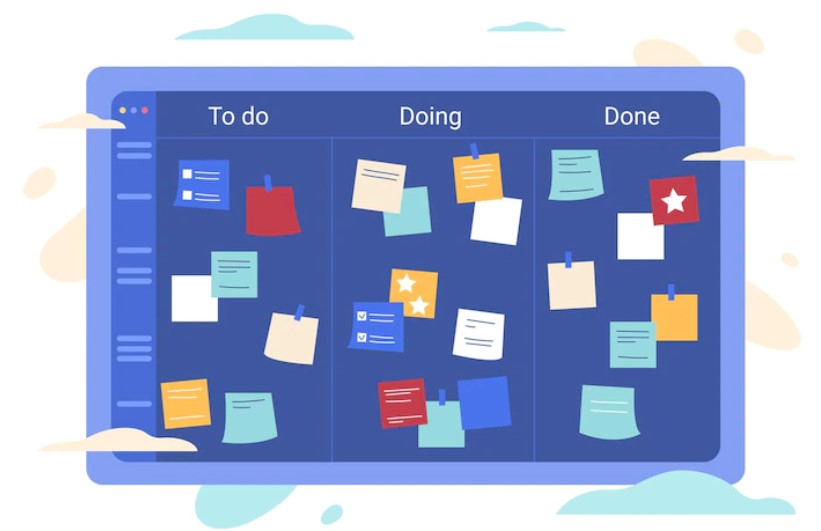
Product development is one of the most frequent processes in a company since they constantly have to create new products that respond to the needs of their customers or make adjustments to those they already have in distribution. The basic steps to new product development are to give shape to the idea you have, plan how it will be developed, move on to the project execution phase, test it, launch it on the market, and then wait for public feedback to make the necessary adjustments. But applying agile product development to your project can make a big difference.
Let's talk about agile product development
But what happens when we apply agile methodologies to the product development process? We begin by explaining what an agile software development methodology is: it is based on the division of a project into small parts, for continuous development and delivery. Instead of developing the entire product and seeing the result only at the end, agile methodologies believe in the constant delivery of results to evaluate and test each stage of the product as it is developed. Agile product development makes all the difference.
“Agile methodology is an iterative approach to product development lifecycle that is done in a collaborative environment by self-organizing teams. The methodology produces high-quality software in a cost-effective and timely manner to meet the changing needs of stakeholders”, they noted in an article in MaRS magazine.
According to the Agile Manifesto, when working under this methodology, customer satisfaction comes first, so project progress is constantly sent for approval or adjustments. Communication is transparent both within the work team and between the team and the client. Agile teams don't see project changes as a stumble but as an opportunity to improve the product.

Scrum is one of the most used agile methodologies by software development teams, for example, characterized by dividing work into cycles called sprints, which can last from one to four weeks depending on the particular task or goal.
"Every day begins with a short 15-minute meeting, the "daily Scrum", which is done with the purpose of synchronizing activities and agreeing on the best way to work on the day, according to the sprint tasks and the objective. of the project”, they explained in this regard on the Xpand-it portal.
Agile product development: Does it work?
The answer is yes. Regarding the product software development process, agile methodologies allow teams to work according to goals and deliverables periodically. That is, instead of spending months working on a product and the customer only seeing the product when it is completely ready, under the agile approach, this product is developed under “iterations”.
"Iterations (also known as sprints) are smaller amounts of delivered requirements, which are taken from the backlog in their order of importance," they explained on the MaRS portal. The backlog refers to the list of tasks that must be done, in order of importance, which are distributed in different sprints so that the team executes these tasks weekly.
Product management is very important since it is the role that keeps all the progress of the project and the tasks that the team executes in order.

Another of the great benefits of Agile Product Development is that there is better risk management. There are teams that, working under other methodologies, see the changes as a catastrophe because it means "getting out of the plan".
In the case of Agile, it is not a tragedy to change some detail of the product development process. On the contrary, by making continuous deliveries of advances, the necessary adjustments can be made on time, without affecting the evolution of the project. The agile team is always prepared to adapt to changes and to the requirements of both the product and the client.
Product tests under the agile methodology are also very effective since they are applied to each part of the product that is developed and delivered. This avoids having to deal with problems in the finished product.
Who keeps agile product development organized?
In each product development team, there is a product manager who is in charge of planning the project tasks, establishing priorities, and making sure that the workflow stays towards the objectives and goals set in the first place. This product manager is the one who conducts the daily and weekly meetings and is responsible for reporting the progress of the product to the client. This role is also the one that manages all the requirements presented by the client.

Tips for successful agile product development
- Beyond that, the members of the team know what agile methodologies are based on, "Agile" is a "mental state", they limit in the Maze portal. So all developers must be aware of the values and principles of agile methodologies so that they can work on it.
- Communication is essential, as well as collaborative work. Everyone must be aligned on the tasks, goals, and objectives of the project and the product they are developing.
- Software testing should never be underestimated in the product development lifecycle. As a product stage is completed, testing must be applied to ensure that everything works as it should.
- Continuous improvement will always be one of the pillars of agile product development, because it is about working focused on each stage of the product development as expected, correcting errors along the way.
Now that you know how beneficial agile methodologies are for product development, do you dare to apply them in your company? At Rootstack, we have over 10 years of experience developing innovative software products. Contact us!
We recommend you on video

